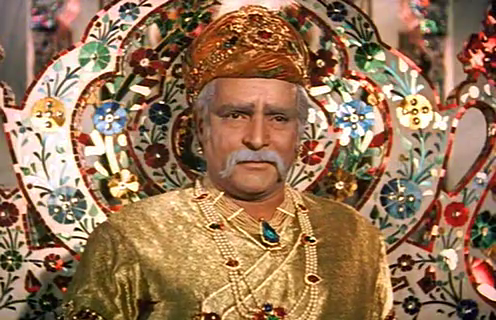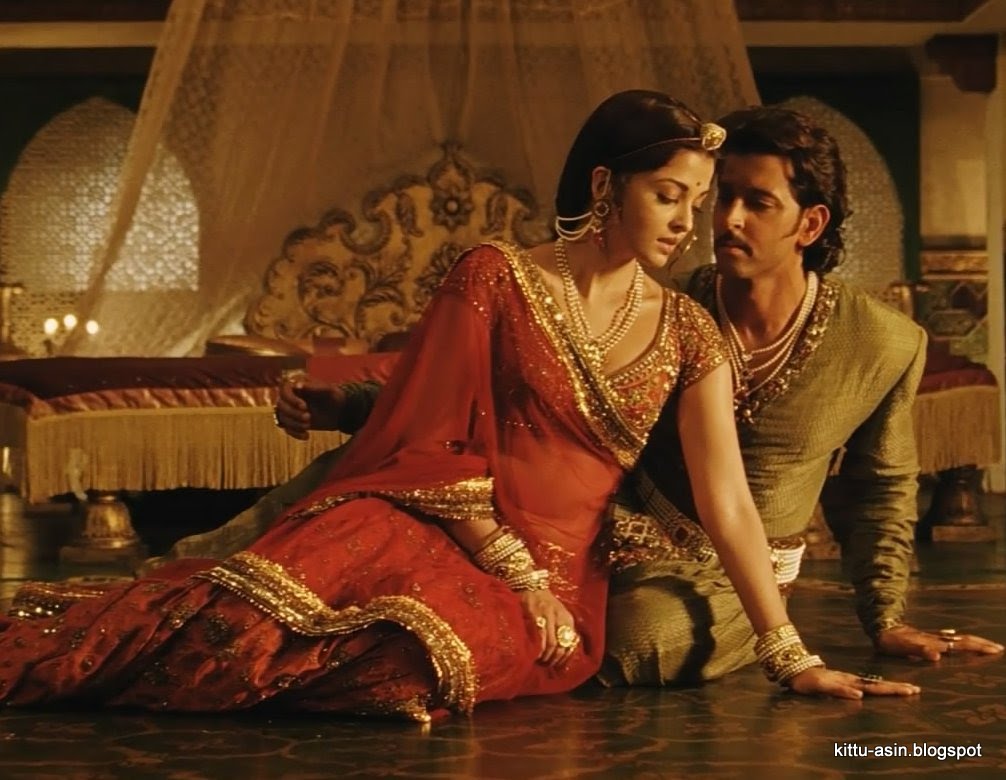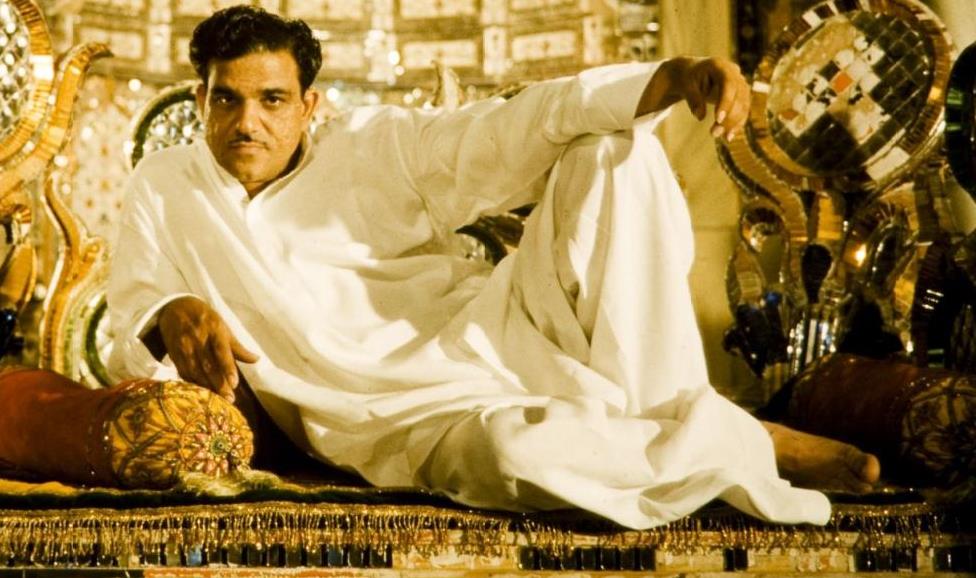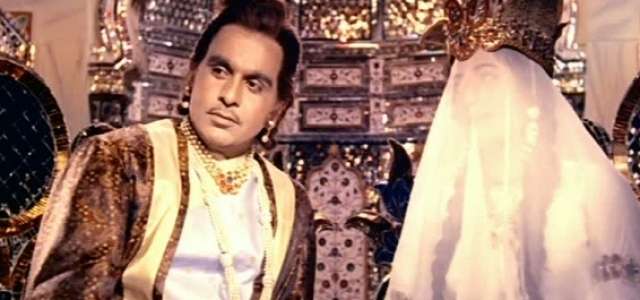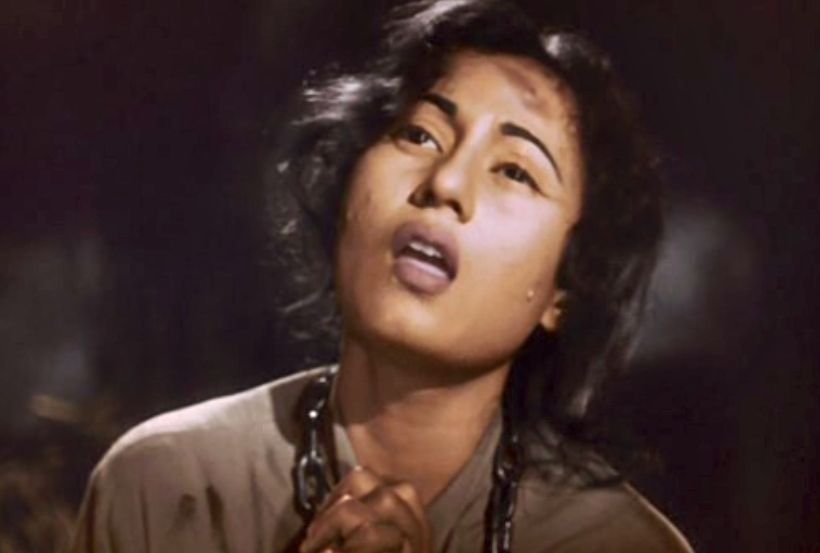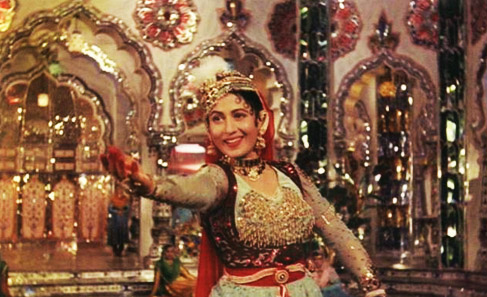A TV channel has recently been scaling high TRPs with the story of Jodha Akbar. It has a cost-effective set design that uses a few stock locations for every scene and uses wind-blown curtains, outdoor shots, ambient lighting and expensive furnishings to convey opulence.
A few years ago, Ashutosh Gowarikar’s film of the same name had tried to create an illusion of grandeur with drapes, painted floors, ornate ceilings but there was something lacking. Details that engage the eye and create a sense of awe. That don’t just fake royal excess but recreate it to the last bejewelled pillar and lush curtain to a throne fit for a king to pearls strewn on the path of a prince on his way back to his palace after years. The kind of awe that we still experience when we watch K Asif’s classic period drama Mughal-e-Azam.
**
The film till date remains unsurpassed in its ability to convey the most glorious period of the Mughal empire in India when between the dusty warfare over territories and the hush of gold dusted corridors of power, a love story was blossoming like a discreet bud of pomegranate.
The story may have been part truth, part a fantastic fable but it was brought to life by K Asif (picture above) over a period of nine years with a passion that at that time had been considered foolish. This was the most expensive film made in India at that time and for decades, no film could surpass its production cost that came to about Rs 1.5 crore .
Artisans from different parts of the country crafted the props. The statue of Krishna around which a Janam Ashtami sequence and the hit song Mohe Panghat Pe, were woven was made of real gold. Lotus ponds, canals where love letters were floated in petals of flowers, gardens with fountains and flowering trees, halls with larger-than-life doors, the glint of chandeliers, a glittering sheesh-mahal that cost more than the budget of an average film (over 10 lakh and where the epic song Pyar Kiya Toh Darna Kya was picturised) were only some of the high-points of the film. The sheesh-mahal set measured 150 feet in length, 80 feet in breadth and 35 feet in height. It was made from Belgian mirrors and took two years to build.
When Dilip Kumar’s Salim is shown walking back to his royal life after years of warfare, Asif insisted that only real pearls would be strewn in his way. Hundreds of carpenters, decorators and painters were employed to conjure the imperial Mughal era. .Even the slippers the prince slips on are dazzling. The songs are all picturised in different settings, each one more elaborate than the other. Even the background dancers and chorus girls are colour- coordinated. The costume design was so authentic that the queen Jodha wore hand-stitched clothes encrusted with real gold weighing a few kilos. Traditional zardozi embroidery detailed every costume. The jewellery with real gems was designed in Hyderabad by traditional goldsmiths. The crowns were crafted in Kolhapur and the footwear in Agra.
Asif’s logic in creating this level of authenticity extended to living spaces of his characters because he believed an actor would not feel like royalty if he/she was not dressed or lived like royalty. The war scenes incorporated thousands of horses, camels, elephants , real armoury made by Rajasthani ironsmiths, and real soldiers from the army. When Anarkali played by an ailing Madhubala was imprisoned in a plot twist, real chains were used to shackle her.
The film’s premiere was no less dramatic. The film was screened at Maratha Mandir with the foyer decorated like a Mughal palace. The invites were designed to look like royal scrolls and the film’s reels were carried to the theatre atop a decorated elephant! It is hard to imagine such attention to detail in today’s cinema and maybe that is why Mughal-E-Azam is still a text-book lesson in not just cinematic brilliance but production design where even a prop is a character.
**
This story was earlier published in The New Indian Express , Chennai






